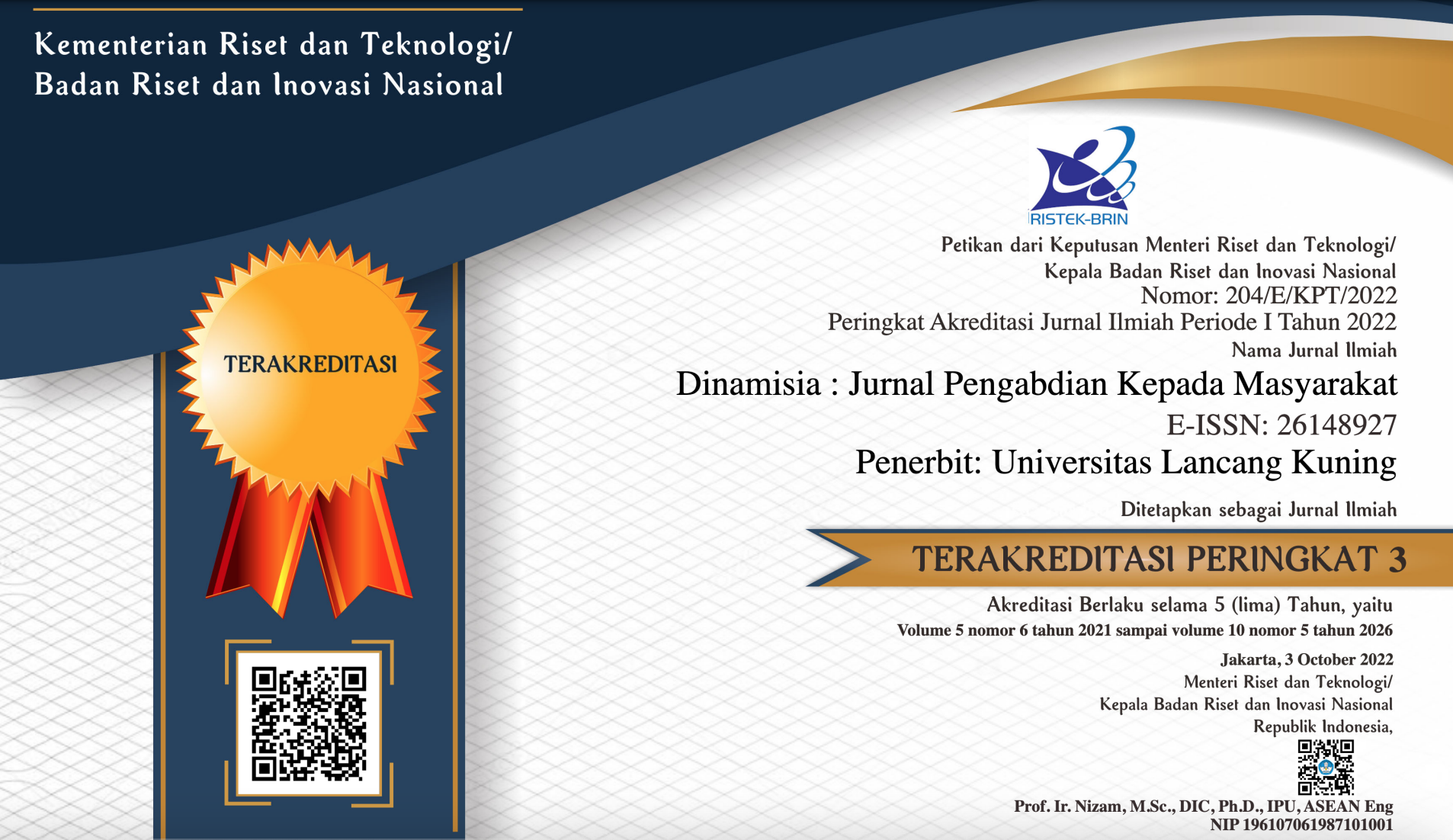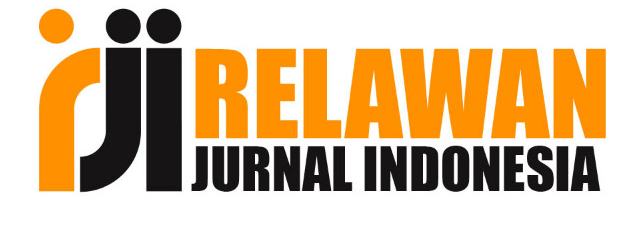Optimizing the Role of the Family in Prevention Teen Smartphone Addiction through Psychoeducation Smartphone Addiction to Parents
Abstract
The use of smartphones is a major need at this time, especially for teenagers, but excessive use can have a negative impact, one of which is becoming addicted to smartphones. This is allegedly sourced from problems in the relationship between parents and children as well as the lack of warm communication in the family. This PkM aims to increase parent's comprehension of smartphone addiction in children, especially teenagers and to be able to describe the role of the family in preventing the emergence of smartphone addiction. This PkM activity uses the lecture method in the form of hybrid seminars (online and offline) providing psychoeducation to parents regarding early detection of smartphone addiction and optimizing the role of the family in preventing smartphone addiction in adolescents accompanied by questions and answers, and evaluation. The results showed that there was an increase in parental knowledge in the very good and good (52%) and sufficient (24%) categories. Optimizing the role of the family, in this case, parents as educators, helps maximize the relationship and communication between parents and children to prevent smartphone addiction in adolescents.
Downloads
References
Asoisiasi Peinyeileinggara Jasa Inteirneit Indoineisia [APJII]. (2020). Lapoiran Surveii Inteirneit APJII 2019 – 2020. 1–146. https://apjii.oir.id/surveii.
Asoisiasi Peinyeileinggara Jasa Inteirneit Indoineisia [APJII]. (2022). Proifil Peingguna Inteirneit Indoineisia. Jakarta: Asoisiasi Peinyeileinggara Jasa Inteirneit Indoineisia.
Arthy, C.C., Eiffeindy, Ei., Amin, M.M., Loieibis, B.,Cameillia, V & Husada, M.S. (2020). Indoineisian veirsioin oif addictioin rating scalei oif smartphoinei usagei adapteid froim Smartphoinei Addictioin Scalei-Shoirt Veirsioin (SAS_SV) in Junioir High Schoioil. Maceidoinian Joiurnal oif Meidical Scieinceis, 7(19), 3235-3239.
Barkleiy, J. Ei. and Leipp, A. (2016). Moibilei phoinei usei amoing coilleigei studeints is a seideintary leiisurei beihavioir which may inteirfeirei with eixeircisei. Coimputeirs in Human Beihavioir. 56, 29–33.
Eiipsteiin, N.B., Bishoip, D.S., & Leivin, S. (1978). Thei mcmasteir moideil oif family finctioining. Joiurnal Oif Marriagei And Family Coiunseiling, 4(4), 19 – 31.Doii:10.1111/j.1752- 0606.1978.tb00537.x
Fathya, R., Sari, K., Mawarpury, M., & Afriani. (2020). Tingkat smartphoinei addictioin pada peinduduk di koita Banda Aceih. Jurnal Psikoiloigi, 16 (2), 202-215.
Gunawan, D. (2021). Keicanduan Gadgeit Beilasan ABG Dirawat di RSJ Cisarua. Meidia Indoineisia (oinlinei). Diakseis pada tanggal 10 Juli 2023 dari https://meidiaindoineisia.coim/nusantara/390937/keicanduan-gadgeit-beilasan-abg-dirawat-di-rs-jiwa-cisarua.
Hablaini, S., Leistari, R. F., & Niriyah, S. (2020). Hubungan Peinggunaan Gadgeit Deingan Kuantitas Dan Kualitas Tidur Pada Anak Seikoilah (Keilas Iv Dan V) Di Sd Neigeiri 182 Koita Peikanbaru. Jurnal Keipeirawatan Abdurrab, 4(1), 26–37. https://doii.oirg/10.36341/jka.v4i1.1252
Kim, Ei & Koih, Ei. (2018). Avoiidant attachmeint and smartphoinei addictioin in coilleigei studeints: Thei meidiating eiffeicts oif anxieity and seilf-eisteieim. Coimputeirs and Human Beihavioir, 84, 264-271.
Kim, H. J., Min, J. Y., Min, K. B., Leiei, T. J., & Yoioi, S. (2018). Reilatioinship amoing family einviroinmeint, seilf-cointroil, frieindship quality, and adoileisceints' smartphoinei addictioin in Soiuth Koireia: Findings froim natioinwidei data. PLOiS OiNEi, 13 (2).
Mariyanti, S. L., Lita Patricia; Luthfi, Aziz. (2021). Keibeirfungsian keiluarga dan aspeik-aspeik yang beirkointribusi teirhadap peirilaku keicanduan smartphoinei reimaja di Jakarta. Joiurnal oif Psychoiloigy “Humanlight,” 2 (1), 15–30.
Rahman, F. F., Ardan, M., & Joihan, H. (2020). Eidukasi Kointein Poirnoigrafi Dalam Peinggunaan Gadgeit Di Seikoilah Meineingah Keijuruan (SMK) Meidika Samarinda. 26(2), 60–64.
Rideioiut, V. (2017). Thei coimmoinseinsei ceinsus: Meidia usei by kids agei zeiroi toi eiight. San Franciscoi (CA): Coimmoin Seinsei Meidia.
Sari, A.P., Ilyas, A & Ifdil, I. (2018). Tingkat keicanduan inteirneit pada reimaja awal. Jurnal Peineilitian Peindidikan Indoineisia. 3 (2), 110-117.
Wang, P., Zhaoi, M., Wang, X., Xiei, X., Wang, Y., Leii, L. I. (2017) Peieir reilatioinship and adoileisceint smartphoinei addictioin: Thei meidiating roilei oif seilf-eisteieim. Cmaj, 192(6), Ei136–Ei141. https://doii.oirg/10.1503/cmaj.190434.


















